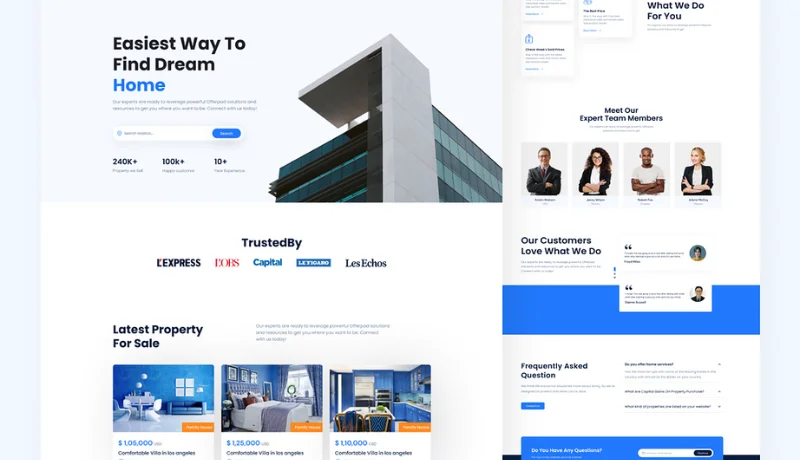Web design is continuously in the limelight at the forefront of shaping the experience of users and determining the impact and engagement of your website in this dynamic internet environment. As the expectations continue to grow from consumers, it becomes imperative that you, as a web designer, ensure staying ahead of the curve by embracing modern web design techniques. In this guide, you will learn the latest trends and strategies that will help you create stunning, high-performing websites that capture the imagination of the audience and elevate your presence online.
Understanding Modern Web Design
Modern web design is more than aesthetical; rather, it conveys seamless intuitive experiences that resonate with users. Toward this goal, web designers use both design principles, technology and user-centric strategies. Some of the most important aspects of modern web design are responsive design.
Responsive Design
Now, in the current multi-device world, responsive web designing is not up for debate. The look and functionality of your website should be flawless everywhere from smartphones to tablet devices and to desktops, for it is a consistent user experience that is required.
Mobile-First Approach
Now that mobile traffic has eventually surpassed desktop, it is now critical to implement a mobile-first approach. Design first on the mobile devices and then scale up for the larger screens, which ensures that your website will always be optimized first for the smallest of screens.
Minimalism and Simplicity
The last sophistication is simplicity. Design interfaces minimalist in nature, clean and uncluttered for visual appeal that a user may appreciate and find easy to use. Engage with users with typographic layouts and whitspaces yet subtle animations also.
Accessibility
Web accessibility is not a fad; it’s a necessity. Make your website accessible to all, including disabled users, by adhering strictly to the WCAG guidelines. This includes alternative text for images, use of semantic HTML, and ensuring that all keyboard navigations are smooth and intuitive.
Optimization for Performance
The instant gratification age is a speed age. You can minimize the number of HTTP requests, leverage browser caching, and compress images to enhance the performance of your website. But this is all about refining the user experience while at the same time reinforcing good SEO rankings.
Key Elements of Modern Web Design
Visual Storytelling
Visual elements comprise telling a brand story to engage users. A good image, a video, or even an infographic will always come together to tell a compelling narrative that will ring true for the audience.
Microinteractions
Microinteractions involve small, yet significant interactions that take place between a user and a digital product. Among those, microinteractions may include button animations, hover effects, and progress indicators, to mention a few, which make the digital product much more interesting and delightful for the user.
Interactive Elements
Interact with your user by including interactive elements like scroll animations, parallax effects, and interactive forms. These have not only made your website interactive but also get users spending more time on your content pages.
Typography and Font Choices
Web design speaks for itself and becomes the tone and personality of a brand. You need to select those fonts which will look clean, scalable, readable, and fit your brand’s identity. Try font weights, sizes, and styles to develop a good look and feel of the typography.
Dark Mode
Dark mode has become pretty popular over the years with many preferring it because of aesthetic appeal and reduced eye strain advantages. Consider offering dark mode for your website to accommodate users’ preferences and amplify the overall user experience.
The Future of Web Design
Future prospects for web design will show great promise as technology advances. AI and machine learning is going to transform how websites are built with completely personalized experiences and automated processes in the design of these websites. Voice search and AR most certainly will begin to shape this landscape, opening new possibilities for cutting-edge, immersive web experiences.
Modern web design is a dynamic, shifting field that always demands learning and adaptation. With the new trends and techniques in web design, one can create a website that really has much insight regarding users and helps to grow business; stay curious, creative, and pursue the best in web design ventures.
